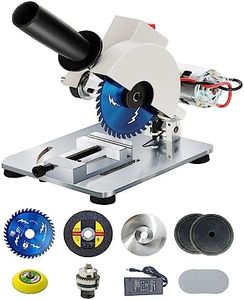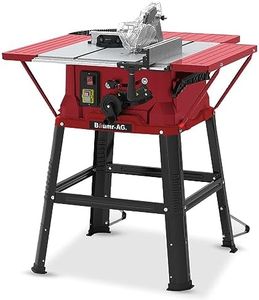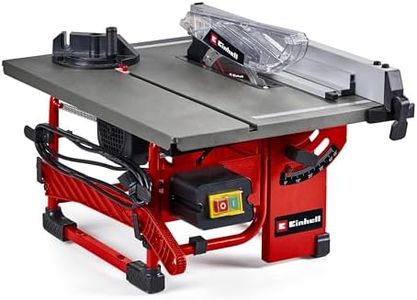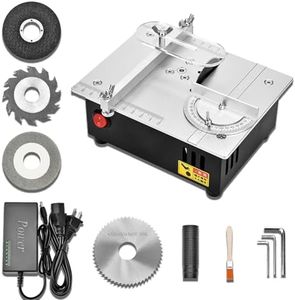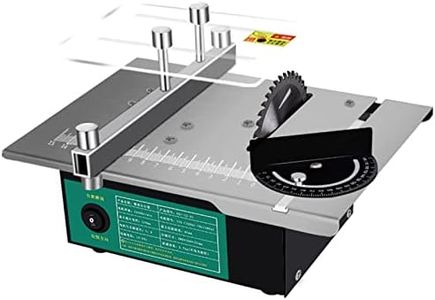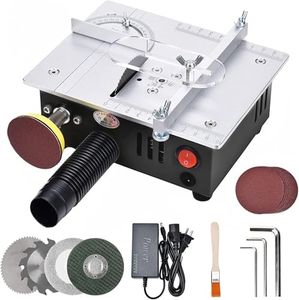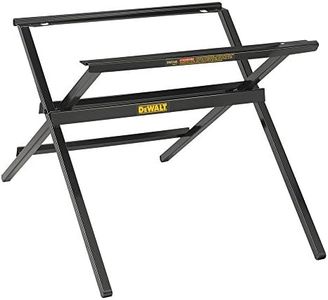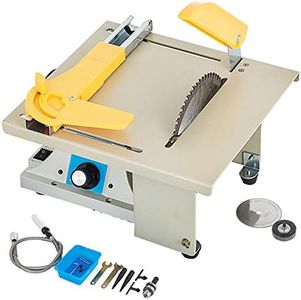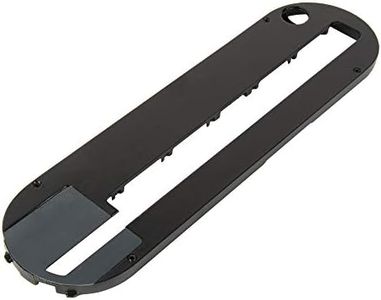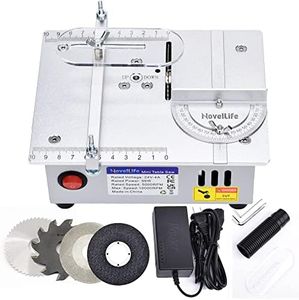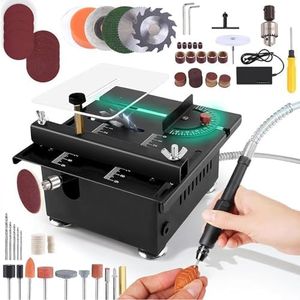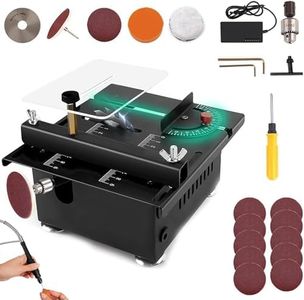We Use CookiesWe use cookies to enhance the security, performance,
functionality and for analytical and promotional activities. By continuing to browse this site you
are agreeing to our privacy policy
10 Best Portable Table Saw
From leading brands and best sellers available on the web.Buying Guide for the Best Portable Table Saw
Choosing the right portable table saw is all about understanding your specific needs and matching them to the saw’s features. Whether you are a hobbyist working on occasional DIY projects or a professional contractor needing a reliable jobsite companion, knowing what to look for will make your purchase far more satisfying. Consider where and how you’ll use the saw, the kinds of materials and projects you’ll handle, and how frequently you’ll need to move the tool. This approach ensures you pick a saw that’s both practical and effective for your particular tasks.Motor PowerMotor power indicates how much cutting force the saw can provide, usually measured in amps. This spec is crucial because it determines how easily the saw can cut through different types and thicknesses of wood or other materials. Portable table saws tend to range from around 10 to 15 amps. Lower-powered saws (around 10 amps) are suitable for light-duty work like thin boards, while higher-powered saws (13 to 15 amps) can handle tougher hardwoods and more demanding jobs. If you mostly do light carpentry, a moderate motor is fine, but for projects like furniture building or frequent use on tough materials, higher power is better.
Blade SizeBlade size is the actual diameter of the saw blade, often 10 inches for most portable table saws. This spec matters because it affects both cutting depth and compatibility with replacement blades. A 10-inch blade can usually cut wood up to about 3 inches thick in one pass. If you’ll mostly be cutting standard dimension lumber, a 10-inch blade is versatile. Larger blades are rare in portable models and may add unnecessary weight. Stick with standard size unless you have a specific need for more depth.
Rip CapacityRip capacity refers to the maximum width of material the saw can cut to the right of the blade using the fence. This number is important if you plan to rip (cut lengthwise) larger sheets, like plywood. Smaller rip capacities (under 18 inches) suit users working with narrower boards, while a capacity of 24 inches or more is preferred if you need to cut full-size plywood sheets. Choose the rip capacity that matches the size of materials you’ll handle most often.
Portability and WeightPortability is all about how easy it is to move and transport the table saw, which is closely linked to its weight. Portable table saws usually weigh anywhere from 45 to 90 pounds. Lighter saws are easier to carry but may sacrifice some stability. If you’ll be moving your saw frequently between jobsites or storage, a compact, lightweight model is best. If you’ll leave it mostly in one place (like a workshop), the extra stability of a heavier unit could be beneficial.
Stand and Mobility FeaturesMany portable table saws come with stands—some fixed, some collapsible, and others with wheels. A sturdy, easy-to-set-up stand can save your back and improve accuracy. If you move the saw around a lot, look for a model with a rolling stand or integrated wheels, which make transport much easier. Match the stand type to your routine—workshop users may prefer a solid, stationary stand, while mobile users benefit from collapsible or wheeled designs.
Safety FeaturesSafety features can include blade guards, riving knives, anti-kickback pawls, and emergency stop switches. These elements reduce the risk of injuries during use. If you are new to table saws or will be using them in shared or educational spaces, prioritize models with intuitive and comprehensive safety systems. More experienced users may focus on efficiency, but safety should never be overlooked.
Dust CollectionDust collection refers to the saw’s ability to control and direct sawdust away from your work area, usually through a port or chute that connects to a vacuum or dust bag. This keeps your workspace cleaner and improves air quality, especially important for indoor or frequent use. If you’re working in a small or enclosed space, or if you value minimal cleanup, pick a saw with a well-designed dust collection system.
